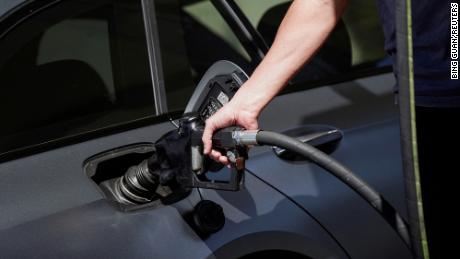
By the end of August, the labor market will have fully recaptured all jobs lost during the pandemic, Fitch Ratings projects in a new report shared first with CNN.
If that happens, it means payrolls would have returned to pre-crisis levels in barely two years. By comparison, Fitch said it took a staggering six years and five months for the jobs market to fully bounce back during the painfully slow recovery from the Great Recession.
The late summer target for recovering all the jobs lost from Covid-19 looks doable. The United States is only about 1.6 million jobs shy of February 2020 levels.
13 states are back to pre-Covid employment
Similar to Fitch, Moody’s Analytics is forecasting a return to pre-Covid employment in the third quarter, which ends September 30.
Parts of the country are already there. Thirteen US states, including Florida, Georgia, Colorado and Arizona, have already fully recovered all jobs lost during Covid, Fitch said.
One important caveat, however, is that the US jobs market has not fully recovered the jobs that would have been created had the downturn not occurred. Moody’s estimates that employment would be 4.5 million jobs larger than it currently is if the economy maintained pre-pandemic trend job growth.
Still, the projected return of pre-Covid employment this summer underscores the rapid recovery from the health crisis, due in part to unprecedented support from the Trump and Biden administrations, Congress and the Federal Reserve.
Boom-to-bust worries
If anything, the jobs market looks too hot, raising the specter of a boom-to-bust scenario where an overheating economy flames out because of high inflation.
Fitch warns in its report of “acute labor shortages in many states,” especially in the West and Midwest.
The ratio of job openings to unemployed people hit post-pandemic highs in 20 states in February, Fitch said. This key indicator of labor shortages is especially elevated in Nebraska, Utah and Montana, where the number of unfilled jobs is triple the number of unemployed people.
One problem is that some workers remain on the sideline, limiting the supply of labor. This is for a variety of reasons, including Covid-related problems, high child care costs and retirements.
Just eight states have fully recovered or exceeded their pre-Covid labor force participation rate, according to Fitch.
The labor force participation rate of Vermont, Nevada and Maryland remains more than four percentage points below pre-crisis levels.
The good news is that the very tight jobs market has lifted wages, especially among lower-income workers. And workers have the flexibility to quit their jobs and get better ones.
‘Unhealthy’ level
One concern is that the jobs market is too tight — and that is making inflation worse.
The Federal Reserve wants to avoid a wage-price spiral, where high prices cause workers to demand higher wages, causing higher prices and so on.
“That’s a very, very tight labor market — tight to an unhealthy level,” Powell said.
The Fed hopes to cool off the jobs market, and inflation, by raising interest rates.
The goal is for higher borrowing costs to ease demand, giving supply a chance to catch up. That should ease inflation, allowing the economic expansion to continue.
If that doesn’t happen, the Fed may be forced to raise interest rates even more aggressively, slowing down the economy to the point where it risks sparking a recession that sends unemployment rising once again.
